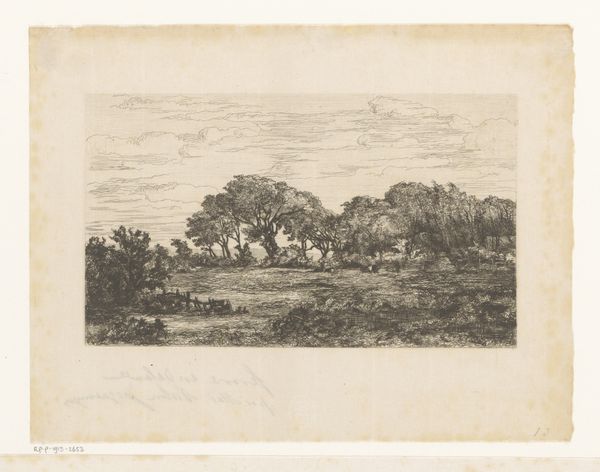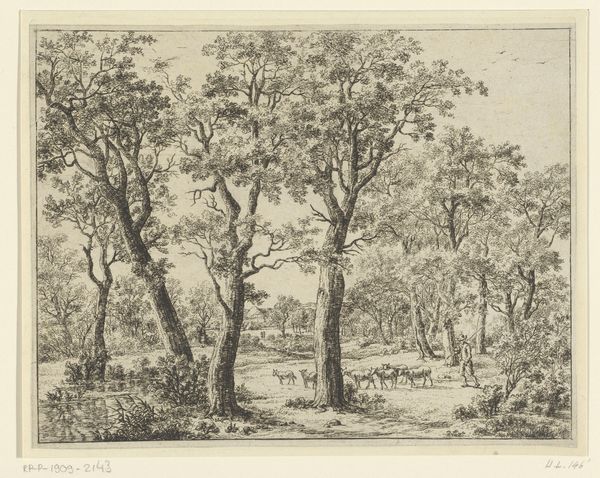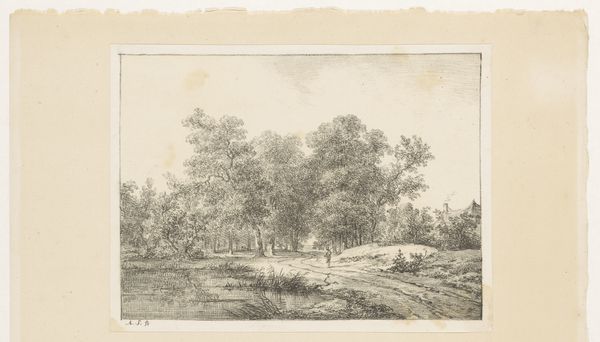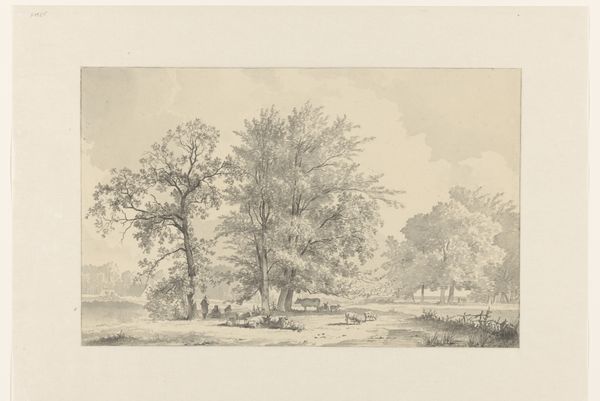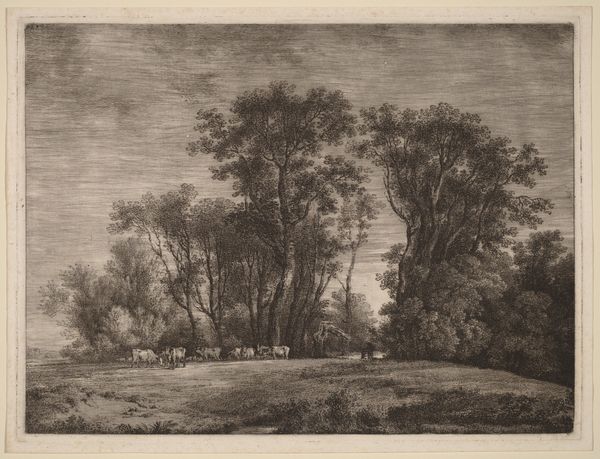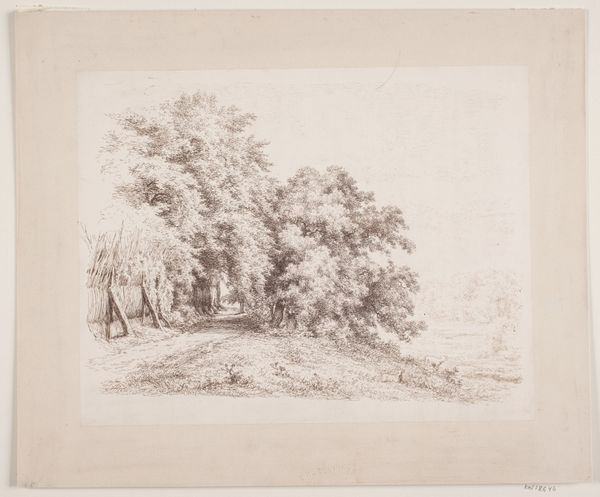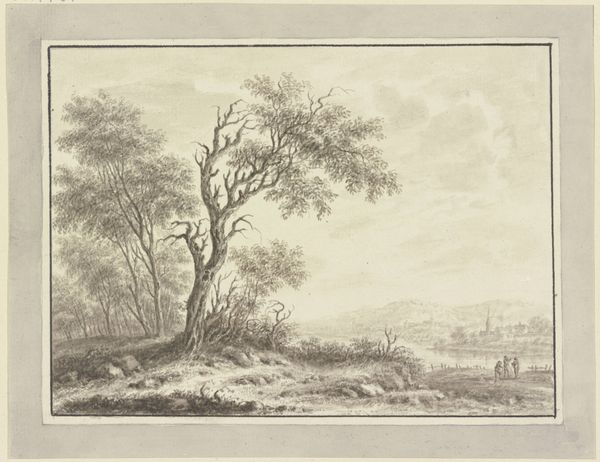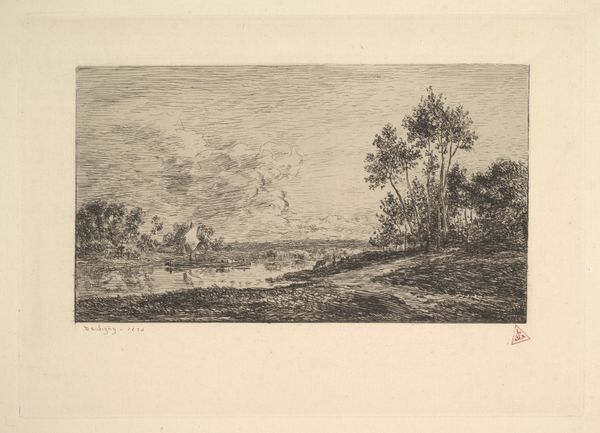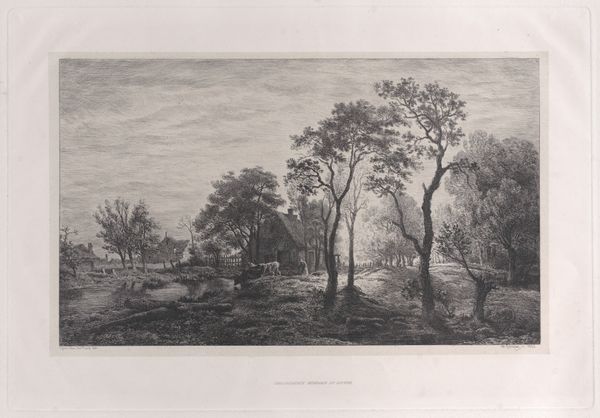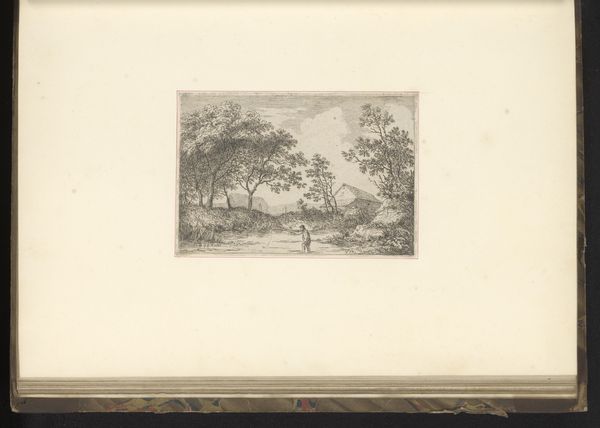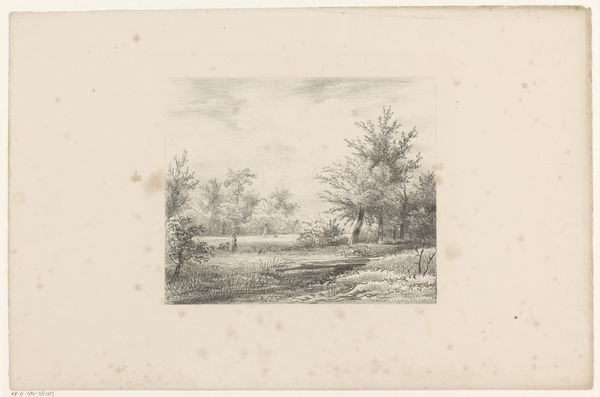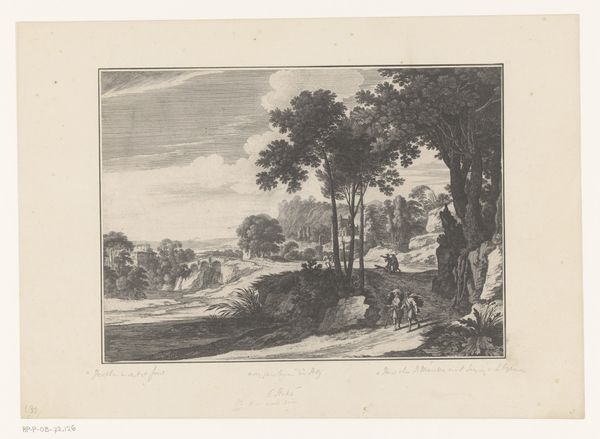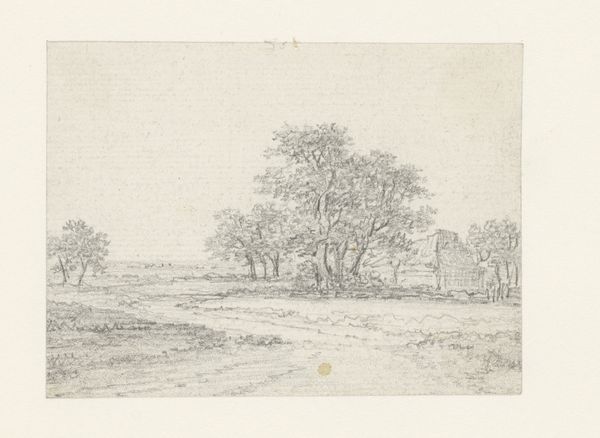
Copyright: Public Domain
Curator: Here we have Eugène Cicéri's "Design for a Stage Set," created sometime between 1830 and 1890. The artwork, a combination of pencil, coloured pencil, drawing, and print on paper, invites us into the romantic imagination of the 19th century theater. Editor: Oh, instantly transporting. The subdued palette feels melancholic, almost a memory fading at the edges. There's a hazy, dreamlike quality—very fitting for a stage set. What story would unfold in such a place, I wonder? Curator: Absolutely. The row of trees, carefully sketched, serves as a threshold, symbolically leading the audience into another world. Notice how Cicéri uses the landscape tradition not just as backdrop, but to evoke emotion. This pictorial language spoke to the rising nationalistic sentiments of the time, emphasizing a deep connection with the land. Editor: It does make you think about idealized landscapes. But it also hints at artificiality. The careful grid marks underlying the sketch acknowledge the design, almost breaking the illusion. There's a charming vulnerability in that exposure, don't you think? The theater as life but life on display. Curator: Precisely! And within this delicate tension between the real and imagined, the natural and the staged, lie profound insights into Romantic-era perceptions of beauty, nature, and artifice. Landscape in theatre wasn't simply decorative; it was instrumental in shaping the play’s emotional core, layering depth onto narrative. It is important to remember, especially since many popular tropes are still relevant today. Editor: You know, considering it's a stage set design, I think I'd actually like it even more if it was never realized, a set unfulfilled on a page that suggests potential in everything that lies dormant within it. The performance itself could never equal it in my imagination. It's an interesting intersection between the physical and intangible. I like it a lot. Curator: It presents a fascinating microcosm, inviting us to reflect on what we project on both past, present, and future!
Comments
No comments
Be the first to comment and join the conversation on the ultimate creative platform.
